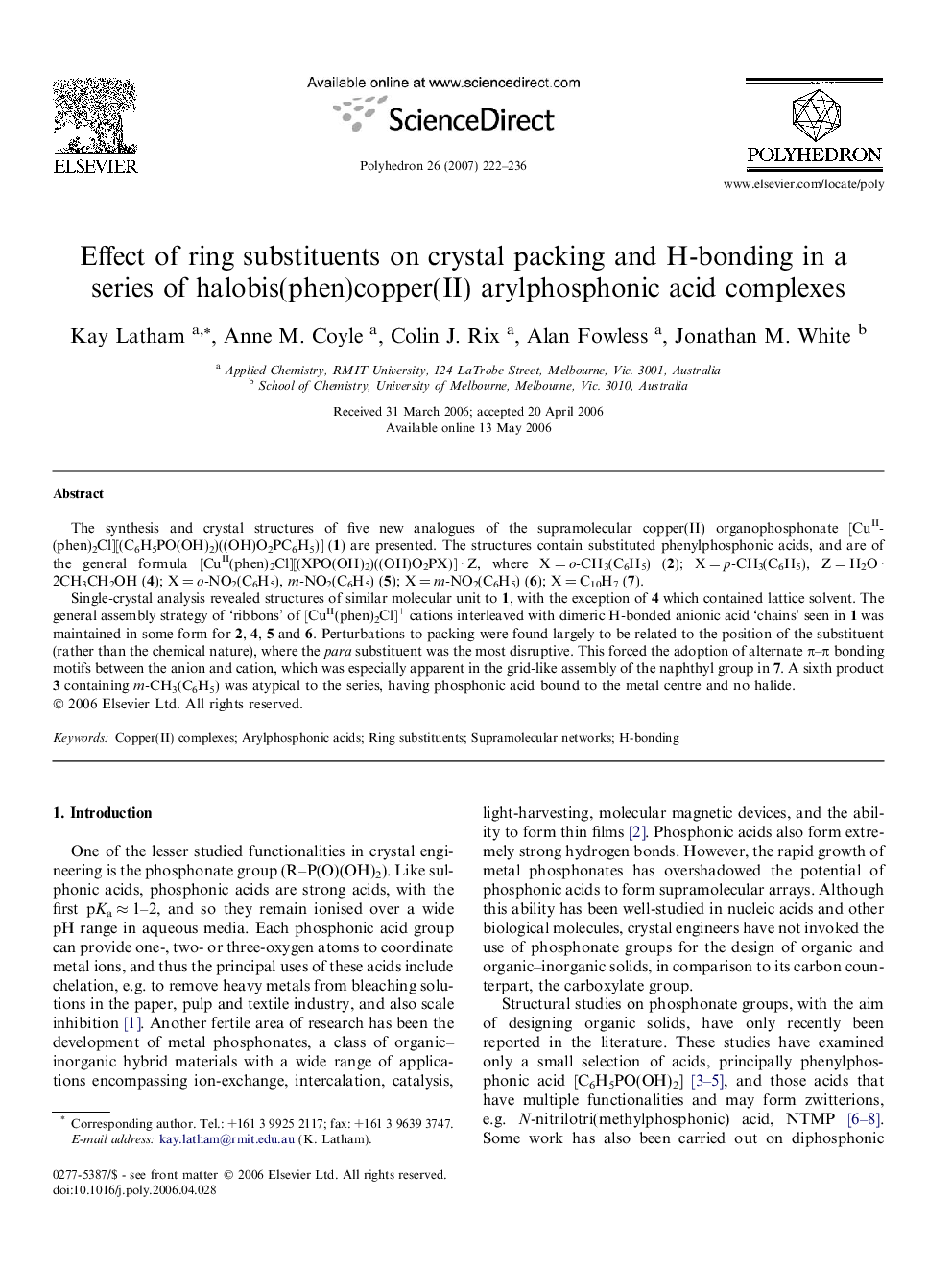| Article ID | Journal | Published Year | Pages | File Type |
|---|---|---|---|---|
| 1338844 | Polyhedron | 2007 | 15 Pages |
The synthesis and crystal structures of five new analogues of the supramolecular copper(II) organophosphonate [CuII(phen)2Cl][(C6H5PO(OH)2)((OH)O2PC6H5)] (1) are presented. The structures contain substituted phenylphosphonic acids, and are of the general formula [CuII(phen)2Cl][(XPO(OH)2)((OH)O2PX)] · Z, where X = o-CH3(C6H5) (2); X = p-CH3(C6H5), Z = H2O · 2CH3CH2OH (4); X = o-NO2(C6H5), m-NO2(C6H5) (5); X = m-NO2(C6H5) (6); X = C10H7 (7).Single-crystal analysis revealed structures of similar molecular unit to 1, with the exception of 4 which contained lattice solvent. The general assembly strategy of ‘ribbons’ of [CuII(phen)2Cl]+ cations interleaved with dimeric H-bonded anionic acid ‘chains’ seen in 1 was maintained in some form for 2, 4, 5 and 6. Perturbations to packing were found largely to be related to the position of the substituent (rather than the chemical nature), where the para substituent was the most disruptive. This forced the adoption of alternate π–π bonding motifs between the anion and cation, which was especially apparent in the grid-like assembly of the naphthyl group in 7. A sixth product 3 containing m-CH3(C6H5) was atypical to the series, having phosphonic acid bound to the metal centre and no halide.
Graphical abstractThe effect of ortho-, meta-, and para-substitution of arylphosphonic acids was explored in a series of copper(II) organophosphonates. In general, the assembly strategy of ‘ribbons’ of [CuII(phen)2Cl]+ cations interleaved with H-bonded acid ‘chains’ was maintained. Packing was affected by substituent-position rather than type, with para- being the most disruptive.Figure optionsDownload full-size imageDownload as PowerPoint slide
